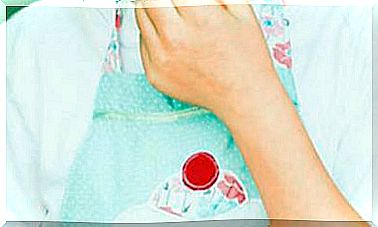Emotional Wisdom: Can’t Control Your Own Feelings?
When we feel an emotion that we dislike, such as fear or anger, we want to control it so that it disappears. But that way it only intensifies. The way is to help her mature

What is emotional wisdom? Before explaining it, we must put ourselves in context.
Control is a mechanism that we often use, mistakenly thinking that it will help us achieve our goals. Many of us try to control our emotions and feelings – fear, impatience, insecurity, anger … – and also our thoughts. There is even a specific technique, very widespread, which is called precisely like this: mind control.
Control does not even serve what it is supposed to be useful for, no matter how widespread it is: it does not serve to discipline us, to be productive, to “get our act together.” In reality, its achievements are very precarious and it can have detrimental effects on our emotional balance.
Why do we hide our emotions and feelings?
Let’s look at some examples: I have to speak in public or meet a person who attracts me or attend a meeting with unknown people. In these three cases, a childlike aspect of me is very scared and feels insecure. I am scared. At another time, a friend tells me that he cannot fulfill a task that I asked him and I feel a violent anger that I do not know how to express.
The part of me that takes the direction of my actions decides to “control” the aspects that I do not like so that they do not manifest themselves
Little by little, I am learning resources to achieve it: imposition of the voice, certain body postures, concealing facial gestures …
This attitude is very common and it is worth looking at it in detail: in control, two inner protagonists are present, the one who exercises control and the one who is subject to it. That is, the controller and the controlled.
My internal controller has as aim the production of a res-determined set and, to achieve this , to strike any other reaction that creates that can threaten. The essence of control is then to prevent the “controlled” state from manifesting itself, its mission is to silence what it can say.
I will achieve some transitory transformation of my outward behavior, at best. I will be able to appear poised in front of the public, give more continuity to my companies or adopt gestures of serenity before my friend.
However, in each of these responses, their precarious d will also appear, that is, the superficiality of that transformation. And the specific sign that the evidence is stiffness. There will be hardness and solemnity in the poise, compulsiveness in my actions or corseted formality in the calm of the treatment towards my friend.
Emotions under mind control
And this is not the worst. When the ineffectiveness of control as a method of transformation becomes evident, it is above all when we examine the fate and evolution of the other term, the controlled.
Faced with certain challenges, we try to control those traits of ours that we believe prevent us from achieving our goals – the tendency to be discouraged or violent anger, for example – that make us look bad, that make us give up early.
If we only suppress these traits, they will remain immature but, in addition, they will be hidden, disqualified and withdrawn from circulation.
Heightened emotions
And what happens to an aspect under those conditions? First, something very simple: it still exists. The idea that the controlled disappears is obviously a wild illusion with very little real sustenance.
Second, by not being able to carry out exchange experiences with the external world –and also absolutely lacking internal support–, the conditions are created for a serious worsening of this immature state to take place.
The worsening manifests itself in two senses: on the one hand it is increasingly immature and, on the other hand, an uninterrupted process of functional degradation is taking place.
Degradation means that a deep fear is added to the state of immaturity and its inevitable consequence: hatred and resentment. In addition to all this, that immature trait cannot always remain hidden, gagged, either.
Beyond his own desires to stay hidden, that aspect tends to manifest itself over and over again, until the controllers burn out and the battered trait erupts out of control and en masse.
Then I will also go through periods in which it will be impossible for me to speak in public or participate in meetings with strangers and I will isolate myself.
This isolation and confinement will have a force equivalent to what I used before to control my fear. In addition, I will experience times of reluctance and total inaction or uncontrollable outbursts of anger.
After a while, control will be restored and an apparent equilibrium will be installed … until the arrival of the next irruption.
Reinforced control
Faced with this sequence, if I continue with the procedure, I will prepare to strengthen my control so that there are no other “leaks”, believing that what happened is due to the fact that I did not control my immature part well.
What I do not know is that it is the control itself that produces this evolution. It is the same principle by which the compression of a spring proportionally increases its expansive power, like a spring.
Everything controlled becomes, in the end, something uncontrollable
What is the appropriate way to promote transformations in human behavior? Without a doubt, learning. This is a basic characteristic of every living organism, which reaches its highest development in man and constitutes precisely one of its distinctive peculiarities.
Willingness to teach and learn
In a learning bond there is, on the one hand, someone who teaches and, on the other, someone who learns. When this happens, the controller ceases as such and becomes an assisting teaching attitude and the controlled becomes someone with a full disposition to learn.
In a genuine learning relationship, the teacher does not impose anything, but collaborates with the other party to try to discover the best solutions. Not only will you discover your goals together, but also the path that will allow you to achieve them.
The most valuable thing that can be taught is the attitude of continuous learning and the best way to do this is through the active example of the teacher himself.
These notions are valid both for the teacher and the student in the external world and for the relationship between two internal aspects of the same person.
For example, when my desire to change my fear of public speaking understands all this, instead of putting energy into hiding or controlling it, it disposes itself to it with a sincere attitude of learning. So, my desire to change it may be asked:
What does this fear need to receive in order to be in a position to evolve towards tranquility and confidence?
In this question there is already the willingness to learn from fear what it needs and also the willingness to offer it to the best of my ability.
Finding your emotional wisdom
When my desire to change my fearful part has developed this double attitude – learning to teach and, while teaching, keep learning – it finds emotional and supportive wisdom.
When we learn to assist ourselves, we can face any disagreement, internal or external, without generating antagonisms or conflicts. We consider each of our parts or facets as worthy participants in our personality and we understand that they all contribute important things.
Then, the vicissitudes that my fear, my anger or my insecurity will go through on this path of learning, with its unknowns, successes and errors, will be simply another manifestation of this mysterious and unpredictable job of living.









